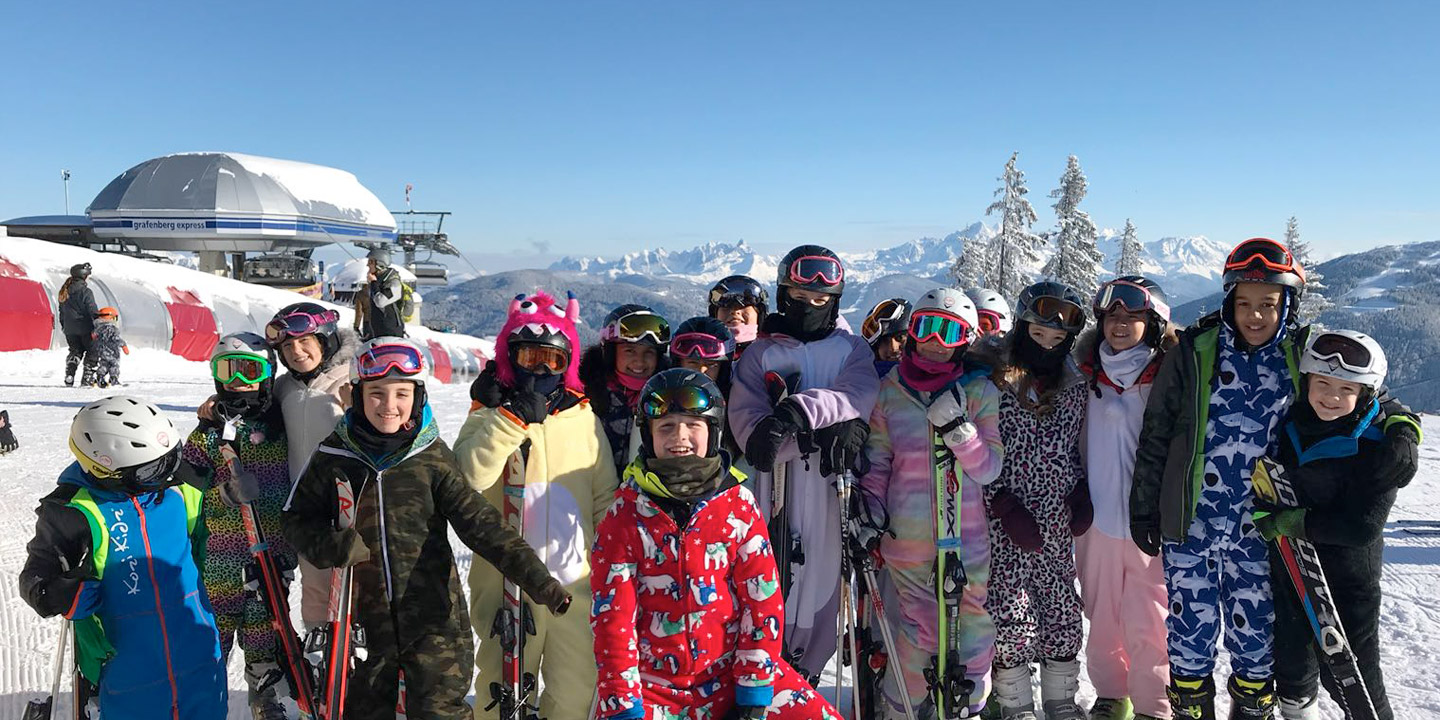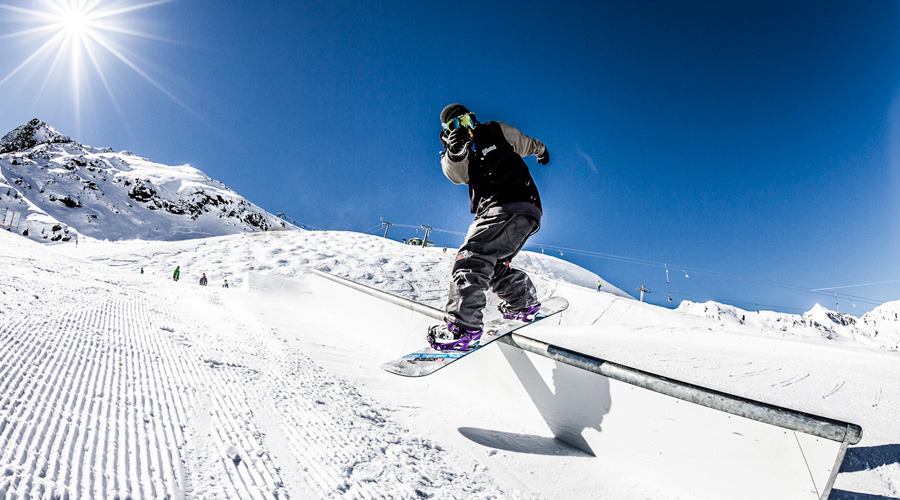Alison’s top tips for first time leaders
Alison Wareham, our Head of Ski & Sustainability, offers some sound advice for first time ski leaders.
Organising residential school ski trips is an exciting opportunity but it’s also daunting. With a good tour operator behind you, however, it can be a very rewarding and enjoyable experience!
Alison’s tips
I find it’s useful to break down the organising of your ski trip into four stages:
The best advice I can offer is - start early; preferably a year in advance or at least a minimum of 6 months. Get support from your SMT or EVC. Send a letter out to gauge the level of interest from students, making sure the dates you’ve planned – December, February half- term or Easter - fit in with exams. Use assemblies to spread the word.
Top Tip 1: Consider skiing at Easter for a better choice of accommodation, better prices and still great snow!
Things to consider when choosing a tour operator:
- Get a recommendation from a colleague.
- Check they offer a programme that matches your requirements.
- Are their pick-up times and points convenient?
- Is their accommodationsuitable for your group?
- Do they provide value for money?
- Check their surcharge policy.
- Are they appropriately licensed with ATOL and Abta.
Top Tip 2: Cheapest is not necessarily the best!
European ski houses, resorts, ski schools, ski instructors, ski reps, après-ski activities and modes of transport all vary enormously depending on your group and your needs. A good tour operator will be able to advise and support you on all these aspects of your trip.
Ski trips aren’t cheap. You could consider doing some fundraising. Talk to your EVC, the parent-teacher association and other staff about how you can subsidise the cost of the school trip and how to fundraise.
Meanwhile here are some ideas:
- Use specific school funds to subsidise pupil premium students.
- Ask the PTA to organise an event or make a contribution.
- Encourage students to fundraise with sponsored events, cake sales, bag packing, carwashes etc.
Once you have confirmed your trip, the fun begins! Your tour operator will get in touch to find out more details about your evening activity programme, rooming and dietary requirements, ferry times, transfers and timings. A good operator will have a client portal, which will make any updates and revisions to your tour a lot easier to make.
Unfortunately there’s no avoiding lists! The tour operator will need to know: the height, weight and shoe size of every person travelling so they can pre-request ski equipment; the ages, dates of birth and gender, and (if you are flying) passport details; any medical conditions, allergies or other dietary requirements; any religious-based requirements, such as halal or kosher diets.
Health and Safety:
Talk to your school’s Health & Safety Officer or EVC about the trip early on. Read and fill in any of your school’s risk assessment and safety management forms. Check the operator’s own Safety Management document/s.
Top Tip 3: Consider going on a pre-tour inspection visit. These are very helpful for carrying out your own risk assessment; they give you confidence about the resort and a chance to get some skiing in too!
A ski trip is a physically demanding experience. If some of your students aren’t very physically active, you may want to consider:
- A course of ski-fit lessons, either in normal PE or as an after-school club; and/or
- A visit to a snow dome or dry ski slope.
Top Tip 4: Give your students a kit list as soon as they book so they have enough time to get everything they need.
SCO Course:
Why not sign up to a one-day Snowsports Course Organiser course? This is a Snowsports England accredited course, designed to give school ski trip leaders the necessary skills to choose an appropriate provider and organise a successful trip.
This is where the adventure starts!
While you’re away, your tour operator should supply you with a 24-hour emergency phone number and some operators will also be out in resort to offer help and support in person if needed. Your bi-lingual tour manager or rep – if you have one – will also swing into action and be on hand throughout the week to ensure all goes smoothly on and off the slopes.
Top Tip 5: To reduce the risk of accident or injuries, always follow your ski school’s guidance on where to ski, and when to start or finish.
Top Tip 6: Have a duty rota and “chain of command” with a member of staff “on duty” on the slopes, taking it in turns to allow staff to free ski.
It’s also a good idea to make sure that all students have a slip of paper with their name, school name and accommodation as well as a staff contact number in a jacket pocket.
The ski school
A good operator will ensure that your ski school offers the highest quality tuition. They should be accredited by their national ski school and follow a strict regulatory code. It is important your students listen carefully and follow instructions for their own safety. But on the other hand, the instructors will do their utmost to ensure your students have a really fun time: the ski race and the presentation at the end of the week will show how much they will have learnt.
Quick guide to slopes classification
1. Green – for beginners. 2. Blue for cruisers and improvers. 3. Red – intermediate with some challenges. 4. Black – for most advanced skiers. Can be ungroomed runs leading to moguls and icy patches depending on conditions.
NB. Piste conditions change during the day; what was a cruising blue run mid morning could be more like a hard red by 4pm. Like wise a quiet red at the end of the day may be a lot easier than an icy and crowded blue.
We highly recommend that you don’t take students off-piste –save it for your personal holiday!
For more information on safety on the slopes visit: www.skiclub.co.uk/infoandadvice.
A good tour operator will love to hear all about the highs and lows of your school ski trip, and follow any social media activity you might have made while in resort. They will pass on all your comments, both positive and negative to their suppliers and use your evaluations to continually improve their service.
Top Tip 7: Consider booking for the following year as soon as you’re back: ski resorts and accommodation often get booked up far in advance.
Skiing in Austria
We love organising ski trips to Austria. It offers some of the best skiing in Europe with ski and snowboarding runs for all abilities in a stunning setting.
Get your Guide for First Time Ski Party Leaders
For a copy of our complete Guide for First Time Ski Party Leaders, call or email Alison:
0208 772 2873
Alison.w@club-europe.co.uk
Like to know more?
Call us on Freephone 0800 496 4996 or get in touch using the links below.








